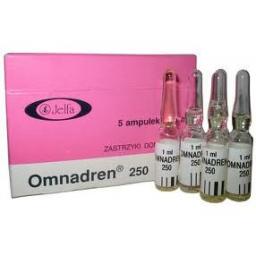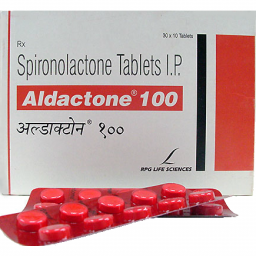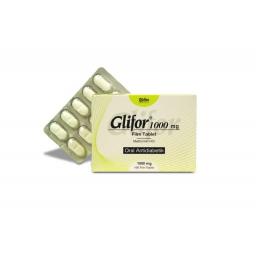In her forties or early fifties, it is possible for a woman to experience symptoms like hot flushes or night sweats, even if she still has regular periods. Some women may also experience mood changes for several months or years before periods actually cease. These symptoms may be due to gradual changes in the ovaries and fluctuating oestrogen levels.
This transition time, ranges from two to ten years before menopause, is called perimenopause.
During this time, many women may find the symptoms confusing, not knowing that what they are experiencing is in fact related to this transitional time before menopause.
Symptoms can start up to five years before menopause as hormone levels start to fluctuate. After menopause, symptoms generally last for a few years and gradually reduce in intensity. In 75% of women, symptoms have resolved by 5 years post menopause. In 25% of women, they can continue for many years.
While menopause is a normal biological event that affects every woman, there is enormous variation in how each woman experiences and views this transition, both in physical and psychological terms.
Her health and well-being, as well as the environment and culture in which she resides, may well influence a woman’s experience.
Decisions about therapies depend on each woman’s current symptoms and their severity, her current health status, her long-term health risks and her personal life expectations.
What are the common symptoms of menopause?
Symptoms are the best guide to identifying when menopause is occurring. Measuring hormone levels is generally of relatively little value, as these levels change rapidly from one day to another during perimenopause.
In some women, physical symptoms like night sweats are predominant, while other women may have few or no physical symptoms but experience significant psychological symptoms.
Between 10 and 20 percent of women have no symptoms, 60 percent experience mild to moderate symptoms and 10 to 20 percent have severe symptoms.
Hot Flushes and Night Sweats
Hot flushes and night sweats are the most common symptoms experienced by 85% of women during perimenopause and menopause.
Hot flushes (sometimes called ‘hot flashes’ or ‘power surges’) and night sweats are common symptoms caused by rising and falling oestrogen levels.
The rise and fall of hormone levels cause a sudden dilation (opening up) of the blood vessels near to the surface of the skin. The sudden rush of blood to these blood vessels often causes a feeling of intense heat, flushing and sweating, as well as possible crawling or itching sensations under the skin.
These symptoms are often uncomfortable, sometimes embarrassing, and usually unpredictable. Mild symptoms can often be alleviated by wearing comfortable cotton clothing and by implementing lifestyle changes, including exercise and general good health practices and by reducing the intake of caffeine and other hot drinks. If lifestyle changes don’t work, women with severe symptoms might consider HT and/or herbal or other complementary therapies.
Other symptoms that can occur may include:
Mood Changes (see Emotional Health and Wellbeing)
Joint and Muscle Pain
Although arthritis is not clearly linked to menopause, many women develop arthritis-like symptoms including joint and muscle aches.
Vaginal Dryness
This is directly related to insufficient oestrogen. Some women find adequate relief with non-oestrogenic creams, but most women with significant vaginal dryness may decide to use an oestrogen preparation inserted into the vagina.Women taking HT tablets may need a vaginal oestrogen preparation as well, to alleviate vaginal dryness and painful intercourse.
Concentration and Memory
Women who are perimenopausal often report having difficulty in concentrating and other minor memory problems (particularly remembering things that were recent). It is important to realise that this complaint can be exacerbated by stress and lifestyle issues and that attention to these important factors will help alleviate the problem. Further, the effects on concentration and short-term memory appear to be temporary and may or may not require treatment.
Disturbed Sleep
Some women experience disturbed sleep during menopause, particularly if they are experiencing hot flushes. Avoiding caffeine, alcohol and nicotine throughout the day and evening can help to increase sleep efficiency and sleep time. Daily exercise and relaxation techniques can also help ease sleep disturbance. If particularly troublesome, HT or some complementary therapies may help with sleeplessness that is related to menopause.
Headaches
Studies suggest that changes in hormone levels during perimenopause may play a role in headaches. Whilst most headaches are minor, some can be more severe and interfere with a woman’s daily life. Migraine headaches tend to peak at puberty, during pregnancy and in perimenopause due to changes in hormone levels at these times.
Skin Changes
The skin undergoes normal changes with ageing, creating slight sags and wrinkles. Drinking plenty of water will help keep skin moisturised and avoiding smoking and exposure to the sun will help to reduce the effects of ageing on skin.
Irritability (see Emotional Health and Wellbeing section)
Low Self Esteem (see Emotional Health and Wellbeing section)
Palpitations
A woman’s heart rate can increase by 8 to 16 beats during a hot flush and this is unlikely to be related to heart disease. It can make a woman aware of her heart beat (palpitations), but is of no consequence to her health. However if this is associated with shortness of breath or chest pain, or is particularly troublesome, frequent or of concern, it should be investigated further.
Decreased Libido (see Sexuality)
Weight Gain
After menopause, many women notice that they lose their waistline. This is due to a 10% redistribution of body fat from the hips and thighs to the abdominal region and is related to hormonal changes at menopause as well as ageing. Generally, a five-kilogram weight gain may be noticed around the time of perimenopause and menopause.
Top Steroid Products for Sale
Omnadren 250
|
Aldactone 100
|
Masteron 200 (2ml)
|


